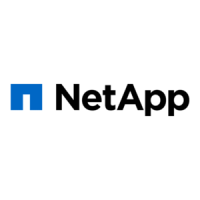▪
bootarg.init.boot_clustered
▪
partner-sysid
▪
bootarg.init.flash_optimized
▪
bootarg.init.switchless_cluster.enable
b.
If External Key Manager is enabled, check the bootarg values, listed in the
kenv ASUP output:
▪
bootarg.storageencryption.support <value>
▪
bootarg.keymanager.support <value>
▪
kmip.init.interface <value>
▪
kmip.init.ipaddr <value>
▪
kmip.init.netmask <value>
▪
kmip.init.gateway <value>
c.
If Onboard Key Manager is enabled, check the bootarg values, listed in the
kenv ASUP output:
▪
bootarg.storageencryption.support <value>
▪
bootarg.keymanager.support <value>
▪
bootarg.onboard_keymanager <value>
d.
Save the environment variables you changed with the
savenv command
e.
Confirm your changes using the
printenv variable-name command.
8. Set your network connection type at the LOADER prompt:
▪
If you are configuring DHCP:
ifconfig e0a -auto
The target port you configure is the target port you use to communicate with the
impaired node from the healthy node during var file system restore with a network
connection. You can also use the e0M port in this command.
▪
If you are configuring manual connections:
ifconfig e0a -addr=filer_addr
-mask=netmask -gw=gateway-dns=dns_addr-domain=dns_domain
▪ filer_addr is the IP address of the storage system.
▪ netmask is the network mask of the management network that is connected to the HA partner.
▪ gateway is the gateway for the network.
▪ dns_addr is the IP address of a name server on your network.
▪ dns_domain is the Domain Name System (DNS) domain name.
If you use this optional parameter, you do not need a fully qualified domain name in the netboot
server URL. You need only the server’s host name.
Other parameters might be necessary for your interface. You can enter help
ifconfig
at the firmware prompt for details.
9. If the controller is in a stretch or fabric-attached MetroCluster, you must restore the FC adapter
290

